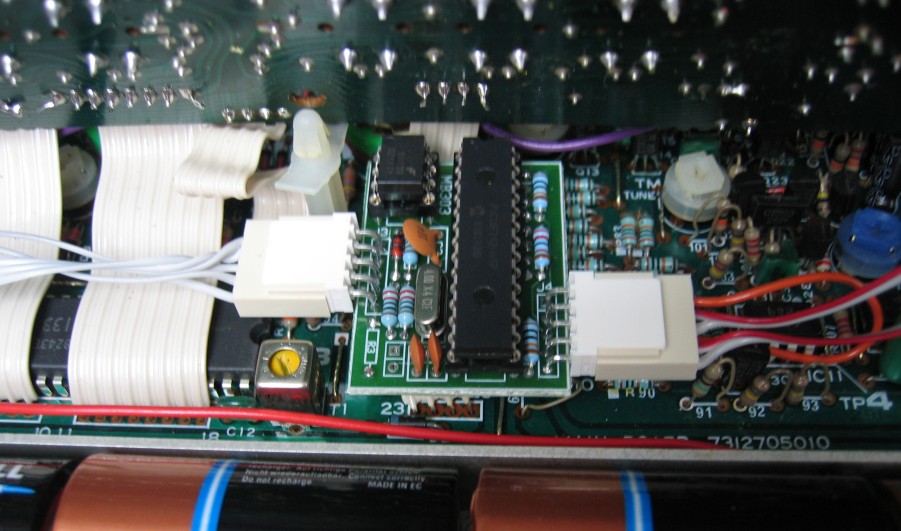MIDIBass 303 - the ultimate 303 MIDI retrofit

As a TB-303 owner, it's long been apparent that the bizarre and unweildy user interface of the 303 sequencer is an essential part of getting the 'true 303 sound'.
It takes a lot of practice and concentration to get exactly what you want out of a 303 - to the extent that it's often easier just to enter notes, accents, slides and timing in a semi-random fashion, and keep the good stuff. Or there's always the classic 'leave the batteries out for a few days, and see what you get' approach.
The problem is that if you want to keep hold of your favourite patterns, but your memory is full and you want to create some more, it can be tricky and time consuming to accurately transcribe your patterns for re-entry at a later date.
Also, if you aren't rich enough to own more than one 303, but you want to have more than one 303 line in a track, you might buy a 303 clone, but without driving it from a real 303 sequencer, it never sounds quite right...
To solve these problems, I developed the MIDIBass 303 MIDI interface.
This interface provides MIDI output from the 303 internal sequencer, MIDI input to drive the 303 synth section, plus MIDI clock sync in and out.
By intercepting the digital signals that pass between the TB303 CPU and the analogue CV, gate, accent and slide generation circuitry, pattern data can be captured in an external sequencer, and then played back to the 303 so that the end result is indistinguishable from the original TB303 pattern.
Here is a demo mp3 file to prove the point.
One channel of this recording is an original 303 playing a pattern at a low tempo so that the articulation of each note is clear.
The other channel is the same pattern played back on the 303 via the MIDIBass 303 interface. The pattern has been recorded from the 303s MIDI output into a P3 sequencer. Both original audio files were recorded into Wavelab, then aligned manually. The 303 was synced to the P3 DIN sync output for both recordings to ensure the same tempo for both patterns.
MIDIBass 303 requires minimal modification to your 303, and installation is entirely reversible.
Full installation instructions can be found here.
MIDI channel, local on/off, sync, accent level and note offset values can be set easily using sysex commands, and these settings are stored in non-volatile EEPROM.
Details of the sysex commands for this can be found in the User Manual (pdf)
MIDIBass 303 is available now.
A complete board for DIY installation is 45 ukp plus shipping at cost.
Or I can install a board in your 303 for a total price of 100 ukp plus return shipping. Turnaround time is usually about a week.
Drop me an email to order, or arrange shipment of your 303.

Last update: 8th December, 2006
home


